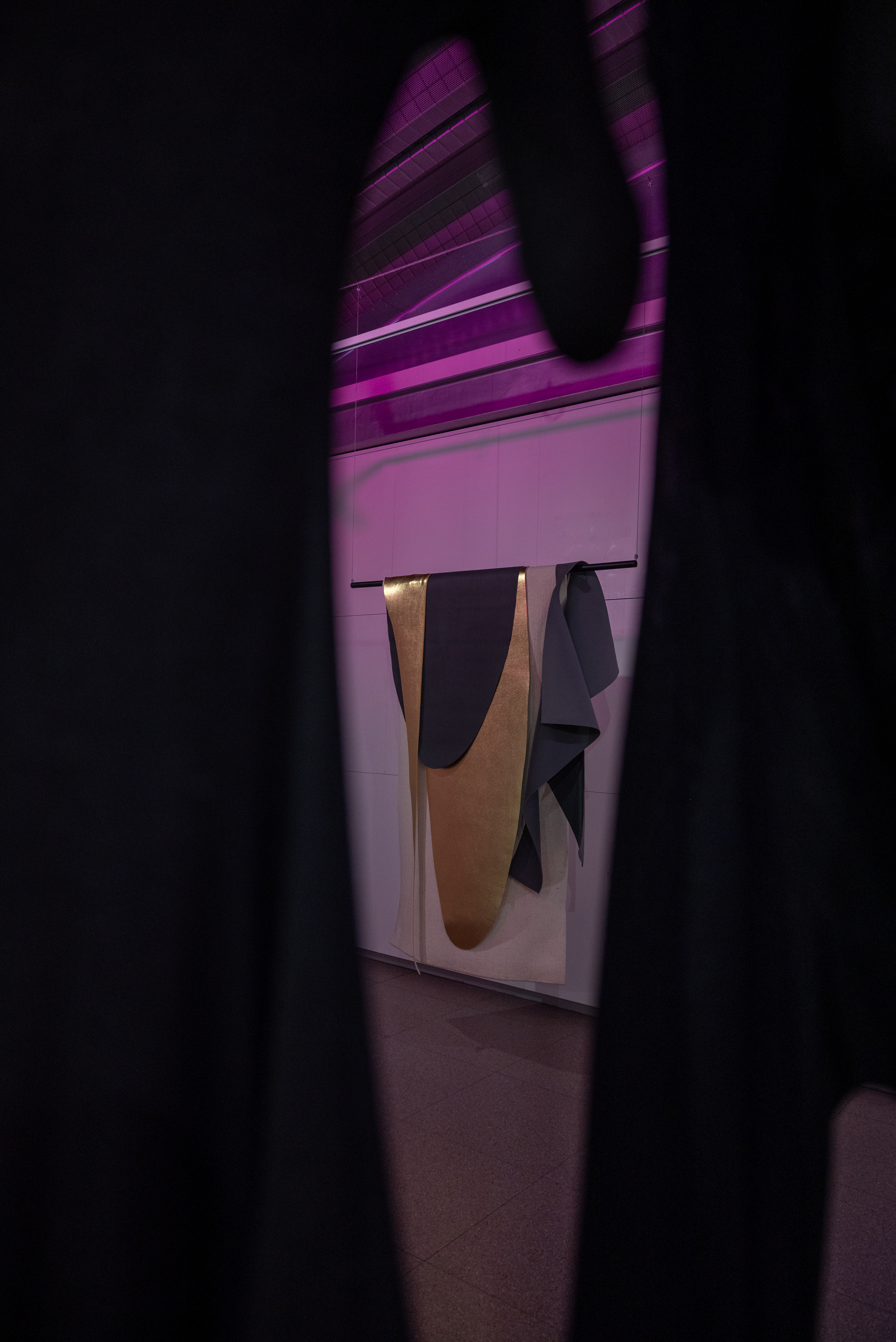“Us, interpreted by flowers,” is a series of exhibitions that invites you to explore your urban surroundings through historical narratives using flowers and plants as the central axis; they become a visual metaphor for the passage of time, and are used as a form of communication through floriography.
The series of exhibitions are held at three civic centres in a site-specific manner. In each location we research the site, its historical context, the people associated with it, and its relation to the development of the city of Barcelona.
“THE GAP”
The third, and last exhibition from the series
CC Joan Oliver “Pere Quart”, les Corts



The Joan Oliver “Pere Quart” Civic Centre, inaugurated in 1999 with a forward-looking vision, is the starting point for this exhibition. It stands in contrast to the brutalist-style Santa Tecla church, designed by architect Josep Maria Soteras, creating a dichotomy between the past and the future, the sacred and the secular, the natural and the unnatural.
***
The Diomede Islands, separated by just 3.8 kilometers in the Bering Strait and belonging to Russia and the United States, are often called the “Island of Tomorrow” (Big Diomede) and the “Island of Yesterday” (Little Diomede) due to their time difference. The ongoing antagonism between the two countries can be linked in part to their different branches of Christianity, Roman Catholic and Eastern Orthodox, deeply rooted in political nationalism.
The enduring influence of religion on various aspects of human life, even within scientific research, is highlighted. Religion and ideology continue to shape our narratives, as reflected in the case of the Diomedes Islands and the unique space-time narratives explored by artists Katerina Ashche and Agustín Ortiz Herrera.
KATERINA ASHCHE
“False Reminiscences”



The artist delves into “The Acts of Paul and Thecla” a non-canonical Christian text, and expands on it, focusing on Thecla’s perspective and motivations. This text portrays a strong, independent early Christian martyr, and touches on asceticism and women’s roles in the church. For this reason, it is at times attributed to a female author. Working within a metamodernist framework, Ashche’s work reflects on the essence of Time, its enduring elements, and the fluidity of memories and perceptions.
AGUSTÍN ORTIZ HERRERA
“De com parlen allò viu i allò mort”



In “How the Living and the Dead Speak”, Agustín Ortiz Herrera explores matter from a queer perspective, using new materials and biomaterials to connect its various forms. The exhibition blurs distinctions between the natural and the artificial, using queer methodologies to challenge anthropocentrism. The result is an unexpected dialogue between the living and the dead, fostering a new cosmology of matter, transcending historical epistemologies.
Floriography



During the 19th century, floriography gained popularity by allowing coded messages to be transmitted through flowers and floral arrangements.
In funerary contexts, carnations and roses evoke loss and the transience of life. White carnations represent sadness and mourning, while white roses symbolise innocence and reverence for the deceased. Poppies, which grow in wheat fields, symbolize remembrance, and have been associated with dreams and death since ancient times.
The lotus flower represents awakening. When dried, both the poppy and lotus pods embody permanence. Interestingly, the English word “flour” is derived from the old French word “fleur” (flower), suggesting its finesse.
Activities




